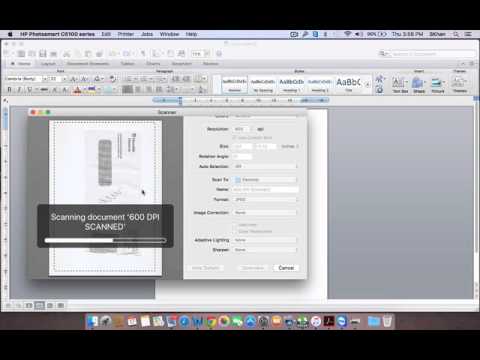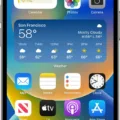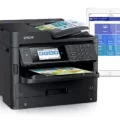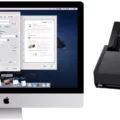Whether you’re a professional photographer, artist, or just someone looking to scan in some photos from your family album, it’s important to choose the rght scanner for the job. When it comes to capturing images digitally, the most important factor is resolution. If you want to achieve high-quality scans, you’ll need a scanner that can handle up to 600 dpi.
So why is 600 dpi so special? When scanning in documents and images, it’s important that they retain their original resolution and clarity. If a picture is scanned at lower than 600 dpi, it will come out blurry or pixelated. The higher the resolution of your scanner, the more detailed your scans will be — and 600 dpi is considered high-resolution by most businesses.
Scanners with 600 dpi capability are great for scanning small wallet-sized pictures as well as slides and negatives. They also make it possible to zoom into an image and crop without compromising quality. Plus, they are capable of printing ultra-high resolution pictures, microtext, OCR codes, and 1D & 2D barcodes — perfect for those who need precise results!
When shopping for scanners that can handle up to 600 dpi, make sure you prioritize quality over price. A good rule of thumb is that if the price sems too good to be true—it probably is! For top-of-the-line scanners capable of capturing detailed images at high resolutions like 600 dpi or higher, expect to pay more than $100 USD. But if you want professional quality scans without breaking the bank too much—it may be worth it!
Overall, if you’re looking for a scanner with high resolution capabilities—600 dpi should be your benchmark! With this kind of scanner on hand, you can rest assured knowing that your digital copies will look just as sharp as their physical counterparts!

Is 600 DPI Suitable for Scanning?
600 dpi is a good resolution for scanning wallet-sized pictures, as it provides enough detail to enlarge the image without sacrificing too much quality. For slides and negatives, however, it is beter to use a higher resolution such as 1500 or 3000 dpi. This will ensure that the details of the photograph can be preserved and that any enlargements are of good quality.
Scanning at 600 DPI
Scanning 600 DPI is a simple process. First, open your scanner’s software or driver. Next, select the ‘JPG’ file type from the File Type drop down box. Then, choose ‘600 dpi’ in the Resolution (DPI) box. Finally, click the Scan button to start scanning in 600 DPI resolution. The scanned image will be saved in JPG file format and you will have a high-quality scan with 600 dpi resolution.
Is 600 DPI Considered High Resolution?
Yes, 600 DPI (dots per inch) is considered to be a high-resolution image or print. A higher DPI means that there are more dots of color in an image, which leads to a higher level of detail and a sharper look. High-resolution images typically require more memory to store and take longer to scan than lower resolution images. Generally speaking, the higher the resolution, the beter the quality of the image will be.
What is the Meaning of 600 DPI?
600 DPI stands for “Dots Per Inch,” and it is a measure of how much detail the printer can print in a given area. It means that the printer is able to compress 600 dots horizontally and 600 dots vertically for every square inch of the card. This offers an ultra-high resolution, and allows users to accurately print pictures, text, barcodes, OCR codes, and more. With 600 DPI printing, even the smallest details are rendered in clear, crisp detail.
The Benefits of 600 DPI over 300 DPI
It really depends on the type of material you are printing and what your end goal is. In general, 600 DPI provides more detail and higher resolution for an image than 300 DPI. This means it can be used to create sharper lines, more vibrant colors, and overall better quality images. However, it might be too much detail for certain materials or applications; in which case 300 DPI may be a better option. Ultimately, it is up to the user to decide which resolution will best suit thir project.
The Benefits of a 1200 DPI Resolution Compared to 600 DPI
Yes, 1200 DPI is generally considered to be beter than 600 DPI. The higher the DPI, the better the resolution of an image or document, which means better copy and print quality. As a result, 1200 DPI will produce sharper and more detailed images than 600 DPI. Additionally, higher resolution allows for smoother half-tones, which are necessary for graphics and photos that require shading or subtle gradations of color.
Checking the DPI of a PDF
To tell if your PDF is 600 DPI, you’ll need to open the document in Adobe Acrobat Pro. Once the document is open, select the View > Tools > Print Production menu. This will open up the Print Production panel on the right side of your screen. From here, select Output Preview from the list of tools. This will bring up a window that will display your PDF’s resolution. If it reads 600 DPI, then you know that it is indeed 600 DPI. If not, then you may need to adjust the settings or resave with a diffeent resolution in order to reach your desired output quality.
What is the Size of an Image with a Resolution of 600 DPI?
A digital image scanned at 600 DPI is 2400 pixels wide by 3600 pixels tall. This means that the image will be 6 times larger than a scan of the same photo at 300 DPI, which woud result in an image that is 1200 pixels wide and 1800 pixels tall. To give you an idea of size, this would be roughly equivalent to a print size of 4×6 inches.
Is High DPI Necessary?
Yes, 600 DPI is overkill for most applications. At a typical viewing distance of one foot, the human eye can only make out individual pixels up to 300 DPI. Going above that resolution does not provide any noticeable benefit. Higher DPI can be beneficial when printing very large images or when viewing the image at a closer distance, but for most applications 300 DPI is more than sufficient.
What is the Highest DPI Scanner Available?
The highest DPI scanner available today is the Epson Perfection V850. This high-resolution flatbed scanner has an optical resolution of 6400 dpi, providing incredibly sharp and detailed images. It features dual lens technology which allows you to switch betwen two lenses – one for photo scanning and the other for documents. The scanner also offers digital ICE Technology, which automatically removes surface defects, dust and scratches from scanned photos. The V850 also offers a 4.0 Dmax, allowing you to scan slides, negatives and film with clarity and accuracy. With its advanced optics and superior image quality, the V850 is the perfect choice for professional photographers or anyone who needs an unparalleled level of detail in their scans.
What is the Optimal DPI for Scanning Documents?
The best DPI for scanning documents depends on the purpose of the scan. For most projects, a resolution of 300dpi is recommended, as it provides a good balance between speed and legibility. If a quick preview is needed, then 75dpi can be used to get an idea of what the document loks like before committing to a full scan. Scanning in black and white instead of color will also reduce file size while still providing good image quality at this resolution.
What Is the Size of an Image at 600 DPI?
A 600 DPI image can vary in file size depending on the format of the image. As an uncompressed TIF, it will be around 24 MB, as a compressed TIF, it will be around 16 MB, and as a print quality JPEG, it will be only 4 MB. It’s important to note that higher DPI images generally lead to larger file sizes because they contain more detail.

Source: usa.canon.com
What Is the Megapixel Count of 600 DPI?
600 DPI stands for “dots per inch,” and is a measure of resolution. It does not directly refer to megapixels, whch are a measure of the total number of pixels in an image. To convert from DPI to megapixels, you need to know the size of the image. As an example, a 4″ x 6″ photo scanned at 600 DPI will have a resolution of 9 megapixels.
Conclusion
In conclusion, scanning at 600 dpi is a great choice for small wallet-sized pictures and slides and negatives as it allows for greater detail retention when enlarged. When printing, 600 dpi is considered high-resolution and enables users to print ultra-high resolution pictures, micro-text, OCR codes, and 1D & 2D barcodes. While this type of scanning requires more memory to store and may take longer to scan than lower dpi settings, 600 dpi provides the highest quality prints available.








